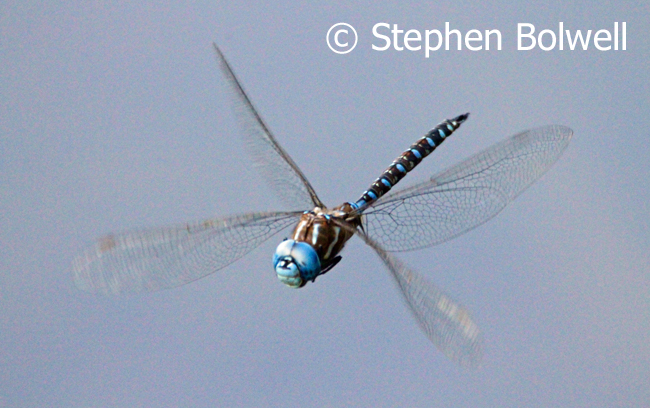Long before humans developed the brains they have today, a great many other animals had already evolved co-ordinated nerve centres completely effective in directing their everyday lives.
In ‘Before We Had Brains 1’, I considered what might have been our earliest vertebrate ancestor – probably a worm-like creature that lived in the sea; and before that we must have passed through a variety of preceding invertebrate stages – it’s been a long road. Almost as extraordinary is that while we were on the evolutionary march from comparative simplicity to our present complexity, many other animals hardly changed at all.
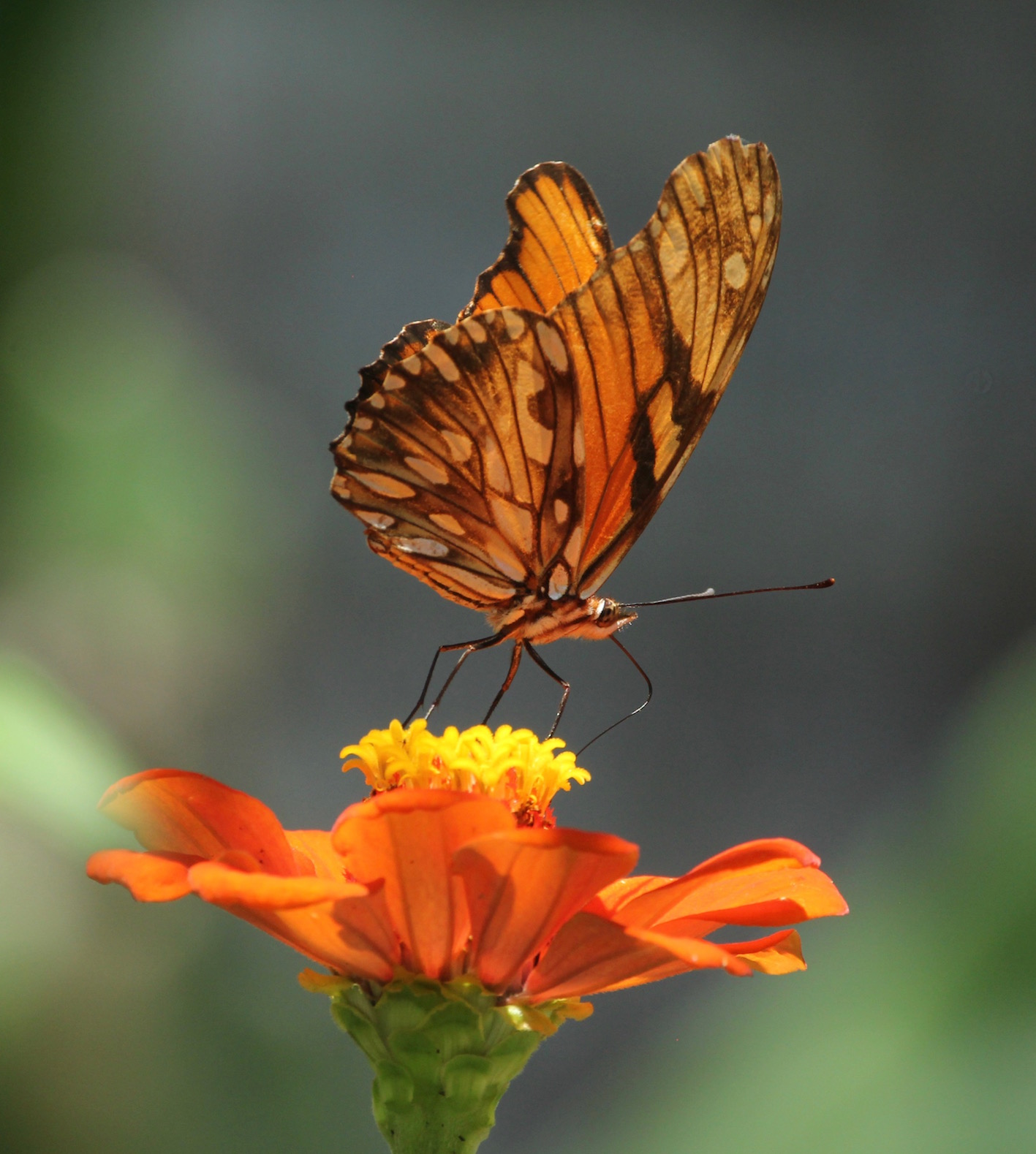
Once a species has adapted through the evolutionary process to an environment that remains fairly constant, there is no advantage to making further dramatic changes. What is certain is that while animals on our branch of the tree were evolving more complex nervous systems, many invertebrates were sticking with something quite different.
The model for a brain-like structure at the front end – common to all vertebrates – was laid down in invertebrates millions of years ago, but many also evolved multiple masses of ganglia to control body functions in a manner very much different from our own.
The well developed nerve ganglia at the head end is close to organs such as ears, eyes and antennae that have developed to receive incoming information. But other masses of nerve ganglia have also developed along the main nerve that runs the length of the body – additional mini-brains if you like – that co-ordinate different parts of the body. Sensory information is also picked up in ways that we would consider unusual – grasshoppers for example can hear through their knees and pollinating insects see patterns on flowers in the ultraviolet range. These are inputs that we have no direct experience of and in consequence sometimes find difficult to comprehend.
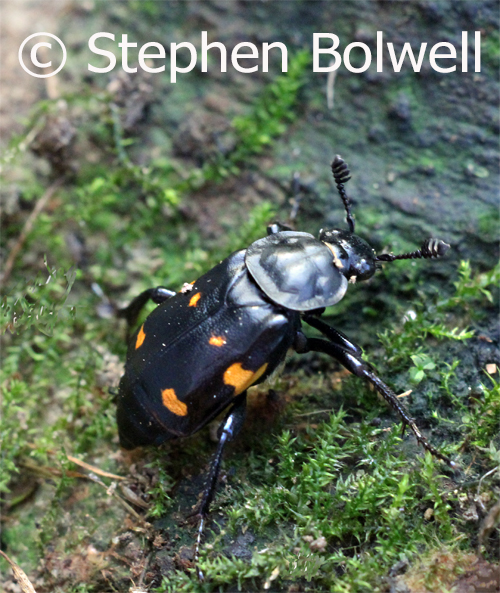
The large and varied Phylum Arthropoda contains animals with external skeletons and segmented bodies with jointed limbs paired in keeping with their bilateral symmetry; they include the Arachnids (spiders and scorpions), Myriapods (centipedes and millipedes), Crustaceans (crabs, lobsters and woodlice) and last but not least – Insects; and all have a very different arrangement of their nervous systems than we do.
Arthropods have become extremely successful, forming a major part of life on Earth, and it is a surprise that we so often view them as aliens – the templates for creatures formed in our wildest imaginings; the sort of things that regularly crop up in our sci-fi stories, and usually portrayed as agressive invaders from another world.
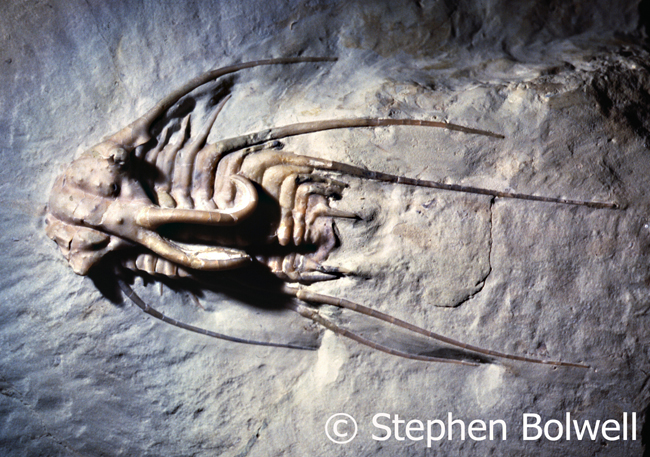
With the millions of nervous systems available, it seems a poor effort to display only one, but I have chosen an example that in general form covers many other insects – it belongs to a grasshopper, and I also have a story to tell.
As a zoology student I frequently glimpsed the internal structure of the grasshopper’s big brother – the locust, and this provided at least a rudimentary understanding of the insects behaviour in relation to its nervous system – or at least as good an understanding as is possible for one who has only one brain.
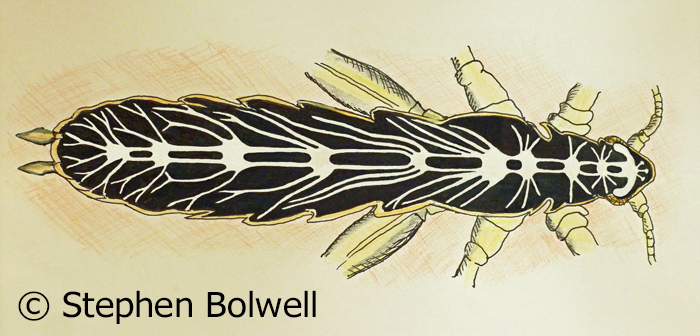
Way back when I was a zoology student, our college expected everybody to work hard for a degree, but on occasions I didn’t feel inclined to fill every waking hour with study, and having finished a series of experiments on how insects see, didn’t feel inclined to attend through a Friday afternoon. As an impetuous ‘know it all’, I felt every aspect of the subject had been adequately covered; as did my co-worker, another student, who just like me, wanted to broaden his educations beyond grasshopper behaviour.
Our university was in London and not too far from The British Museum where a Tutankhamun exhibition was about to end. It would probably never leave the Cairo Museum again and as the world shouldn’t revolve around insect brains (although judging by their numbers, it probably does), we decided to take the afternoon off and visit the exhibition.
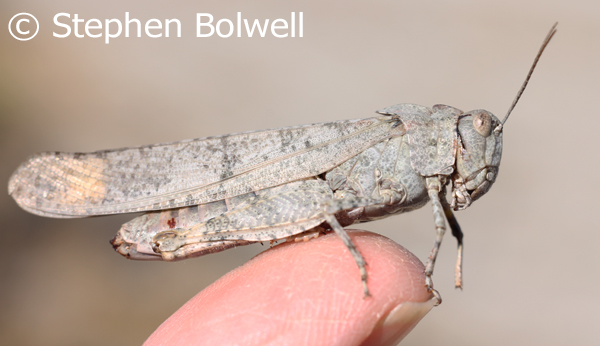

Once out of the lab we’d simply make up a thought experiment like a couple of Victorian armchair naturalists. Our experiments had already shown us that if the image of a sharp edged object – such as a blade of grass – passed rapidly across the compound eye of a grasshopper, the insect would react by jumping. We knew that the hopper would react to a sharp curved edge because that’s the way grass leaves are, but we took it a stage further by theorising that evolution would first and foremost select for a sharp straight edge over a curved one because the former would provide a stronger stimulus when it moved across an insects compound eye, firing off neurons more effectively.
The experimental set up we’d been using all week was a simple one – a bit like a super sized hampster wheel on its side with regular grass shaped incisions cut into its rotating surface. The wheel could be spun around at various speeds with the hopper sat at the centre. But of course we had no plans to actually test our theory using it. We would instead set off for the museum and write the thing down on a scrap of paper as we travelled on the underground. Rather unsurprisingly… our theory turned out to be spot on, with a 15% increase in the grasshopper’s reaction to a straight edge over a curved edge. It was then a simple process to work our figures backwards and even devise a statistical test to make sure our results were significant, rather than a matter of chance. Clearly something new and quite fictitious had been added to the pantheon of scientific discovery; satisfied with our work, we went on to join the queue outside of the Museum, and once inside, had a great afternoon in what seemed a fantasy world almost as impressive as the one we had just invented.

The experiment was written up a few days later and submitted. We thought no more about our harmless deception, until a couple of weeks later our supervisor stopped us in a corridor to congratulate us on our work and insisted that we must submit the findings to a major scientific journal….. Now, if our brains had been working as efficiently as our make believe grasshopper then we might have seen this coming. Terrific we said, but of course we’d have to repeat the experiment to be absolutely certain. I’ve always been hopeless with repeats, all my experiments seemed to invalidate earlier results, usually because I didn’t stop when I was ahead – even though one might expect a pretty clear result with an insect brain, my own brain was less well organised. We never repeated anything of course. Utilising the same thought experiment, we quickly discovered that we couldn’t repeat the results, much to the disappointment of our supervisor. For us, it was a great relief to get off the hook, because nobody wants to start their scientific careers as fraudsters – any scientist so inclined probably needs to work up to it.

The important thing about our non-existent laboratory experiment was that the details were convincing because we had a fair idea of how a grasshopper’s brain might interpret what it’s eyes saw, because the hopper wasn’t thinking about very much, it was simply reacting to a visual stimulus.
It is usually possible to gauge how good an animals eyesight is by simply looking at the eyes – size is always important even with a compound eye, which sees things very much differently from a vertebrate eyes, even though there are similarities in the neural process. For any who have looked inside a grasshoppers head, it is clear from the amount of nerve material dedicated to the eyes and brain in this region, that this must be true.
But what about those other nerve ganglia along the body. For any who have undertaken experiments more thoroughly than I have, it is clear these centres co-ordinate a variety of bodily functions without reference to an anterior brain. I don’t advocate nasty experiments, but a cockroach without a head, and with the rest of the body sealed off with a blob of wax, will run around for several days… and it is noteworthy that you didn’t get that so much with Anne Boleyn.
Success then, is not always about the complexity of a system, it is about appropriateness to a situation; despite millions of years of appearing to show very little change, most insect nervous systems have had plenty of time to fine tune to specific environmental circumstances.
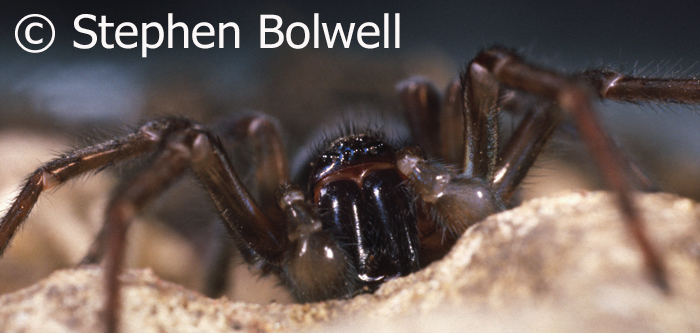
Arthropods may appear rather odd looking, but there is no doubt their bodies are fit for purpose, even though we might consider an insect’s level of complexity no match for our own. Sadly, the truth is they might well survive some environmental disasters that we cannot.
It is presently too soon to judge ‘us’ a major success because our tenure has been short in comparison with many simpler forms that have existed for many millions of years; and stood the test of time.
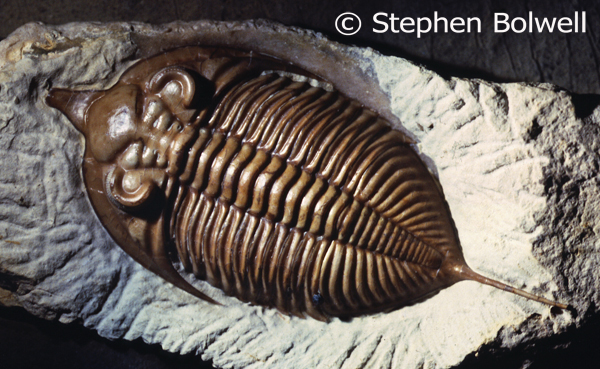
So, which of the vast number of present invertebrate survivors display the most sophisticated nervous systems. Certainly Crustacea such as crabs and Arachnids such as spiders show interesting refinements in behaviour, and this often includes impressive courtship displays, none of which can occur without a finely tuned nervous system.
Crabs.
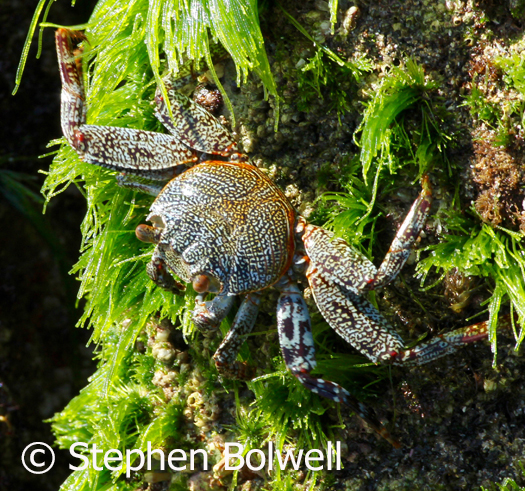
The forelimbs of many also become more developed and used as pincers for defence and males sometimes wave them about during complex courtship displays to impress females; all of which requires a refined nervous system even within certain limitations. A lot of what a crab does is automatic and not a lot of neural activity is devoted to thinking. Crabs exist without philosophical thought. Rene Descartes said, ‘I think therefore I am’, but crabs are not well equipped to think about uses very much; their modi operandi makes them look like creatures with attitude, but b.s.ing is beyond them – sometimes neurological limitations are not such a bad thing.
Spiders.
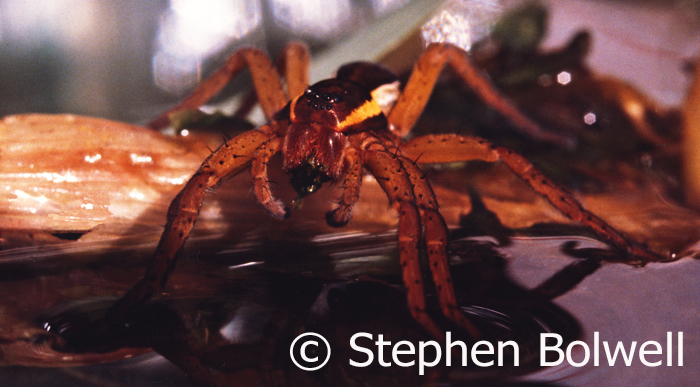
Octopuses.
Perhaps the most impressive invertebrate nervous system belongs to the octopuses. They are Cephalopods and part of the Mollusc family. It is difficult to watch a slow moving snail and consider this as a relative of such a fast moving intelligent creature. By any standards an octupus is a clever animal able to solve complicated problems. Some species have phenomenal eyesight, equipped as they are with eyes similar in structure to our own, these are often as big, or even bigger than their ‘brains’. Octopuses are exceptional at co-ordination and can change colour rapidly to match their surroundings. None of which could be done without a complex nervous system.
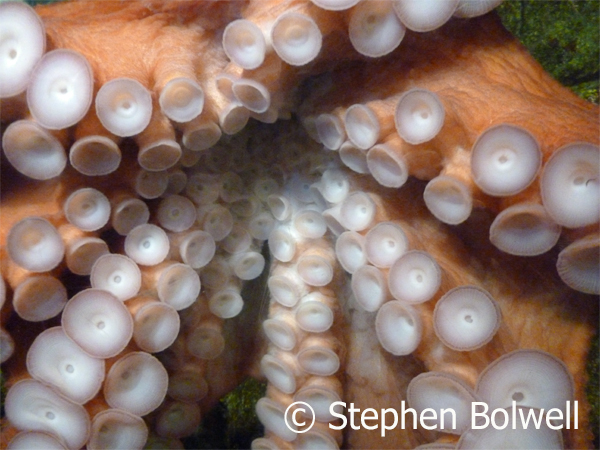
The octopus nervous system contains as many as 500 million neurons with three fifths of this neural mass distributed in the tentacles. The brain is a lobed and compex in structure with substantial computing ability – and this is a creature that also has a good memory.
The question is; with this well organised neural arrangement, does an octopus watch its own arms and wonder what they are up to as they go about doing their own thing, or is the main brain informed of every movement? Because our nervous system is ordered with a single brain doing all of the thinking, it is difficult for us to understand an animal with it’s thinking power distributed so widely throughout the body.
 When it comes down to it, there is no need to invent strange alien like creatures, because we have plenty of extraordinary looking animals on Earth already, and many of which analyse their surroundings very much differently from the way that we do, using ultraviolet, sonar, magnetic and other sensory processes and many catch aspects of the world that we cannot. The strangest of creatures are already here – it is just a question of paying attention to them because in the grand scheme of things, we probably can’t do without them.
When it comes down to it, there is no need to invent strange alien like creatures, because we have plenty of extraordinary looking animals on Earth already, and many of which analyse their surroundings very much differently from the way that we do, using ultraviolet, sonar, magnetic and other sensory processes and many catch aspects of the world that we cannot. The strangest of creatures are already here – it is just a question of paying attention to them because in the grand scheme of things, we probably can’t do without them.
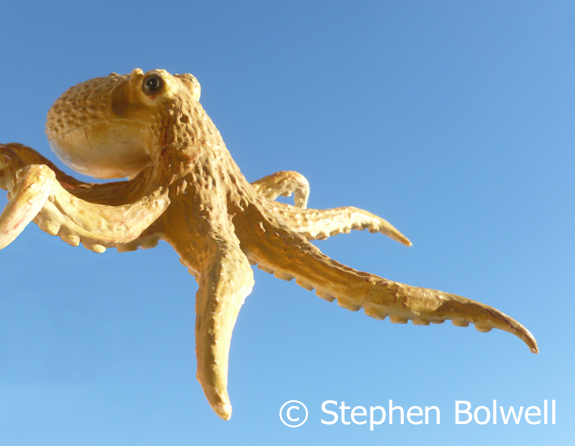
We should take photographs of all of the life that Planet Earth has to offer – even the small and seemingly insignificant forms because all have gone through a great many trials to survive millions of years of evolution. We owe it to them and to ourselves to pay more attention to the life that is around us; to notice and photograph as many species as we can, especially the ones that don’t immediately grab our sympathy or attention. All are fundamental to the success of natural environments and world ecosystems will ultimately suffer if they are lost. We need to record as many as we can, because species are now disappearing from the world at an alarming rate, many of them unknown to science. This is a sad state of affairs. So, ‘Take a picture and Save the Planet’, or at the very least, help to make a record of what might soon be lost to us.
Next time: The Human Brain – Are We Too Stupid to Save the Planet?
